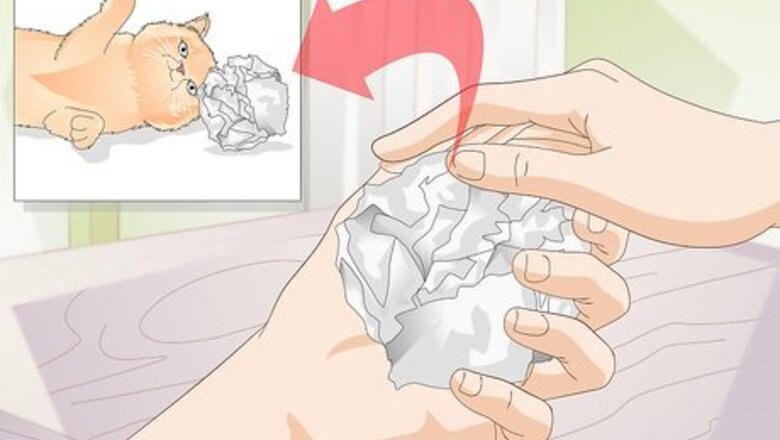
views
Choosing Interactive Cat Toys for When You're Not Home
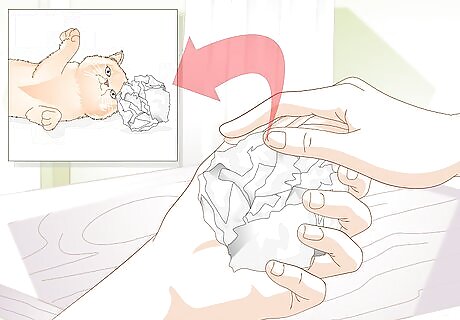
Make your own toy. You can make it simple by simply wadding up some paper for the cat to bat around. There are many ideas for making basic cat toys. However, you can also get some tools and build a toy that involves all the bells and whistles of a store-bought toy.
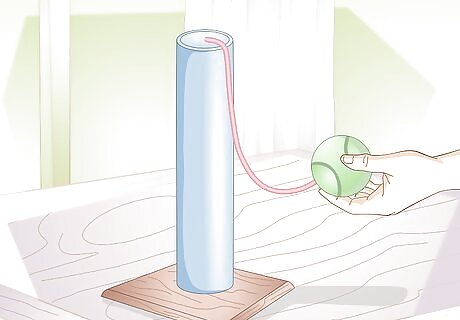
Choose a toy that involves movement. Some toys allow a cat to bat around balls in tubes or on towers. There are even some toys that play the laser game with the cat. Cats love to follow movement, and these kinds of toys will help keep them from getting bored. There also toys that mimic the movements of cat's natural play that will help keep the cat entertained.
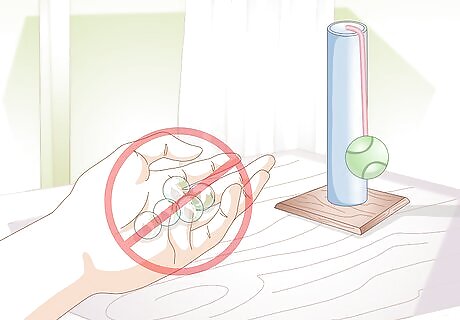
Avoid toys that have pieces a cat could swallow while you’re gone. You don’t want to come home to a vet emergency because your cat has swallowed something that will make it sick. Providing safe toys will help dissuade cats from going for more dangerous items, but the best bet is to secure unsafe items away from the cat’s reach. Your best bet is to check any warnings on the packaging to see if they recommend against unsupervised play.
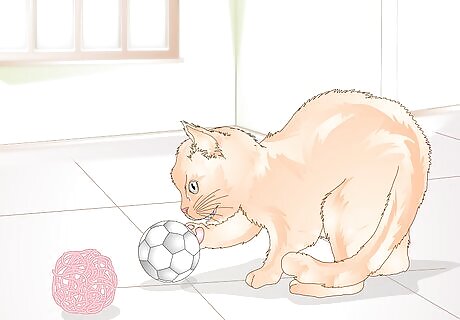
Find a toy that a cat can hit with their paws. In addition to allowing for movement, this allows the cat to control the motion, unlike with a laser toy or a toy that constricts the movement to a specific space. The cat can bat toy mice or little balls across the room and then chase them. It also helps if some of the toys are ones that cat can carry. This will help the cat live out its natural prey drive, and keep it entertained when it's home alone.
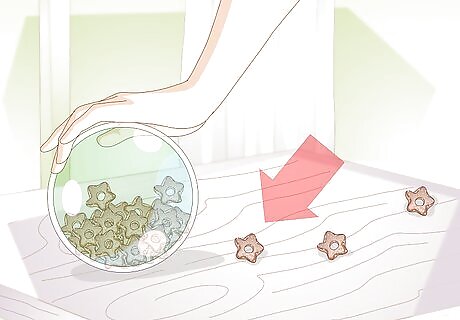
Choose an interactive toy with treats. Some toys are designed to challenge a cat before dispensing a treat. This will give the cat something to work out while you're gone, and give it a nice treat, too. This helps the cat work its mind and body.
Creating an Environment to Keep Your Cat Busy
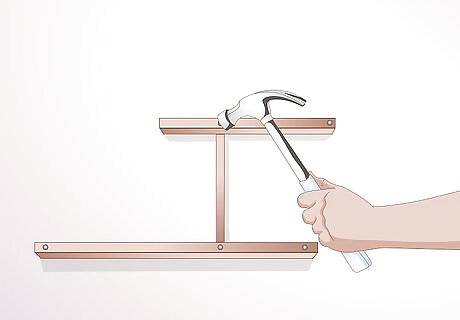
Buy or build spaces for the cat to climb. An enriching environment will invite the cat to do more while you're gone. Just make sure that the cat can easily get down from any of these spaces. There are all kinds of cat trees and cat climbing spaces available out there. If you’re worried about design, there are also design-friendly cat climbing fixtures. You can buy a lot of different structures from your local pet store or online. You can build a cat castle by taping or stapling cardboard boxes together and cutting out holes for the cat to climb through. Cats love boxes. You can even put up cat shelves for the cats to explore.
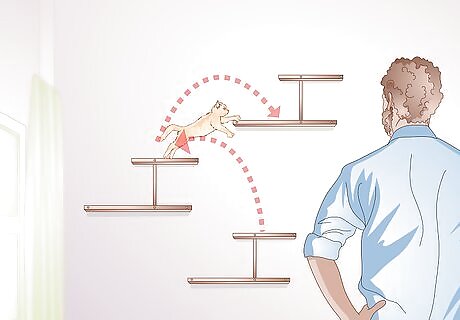
Arrange the structures so that the cat can easily jump or climb from space to space. You don’t want your cat to break something trying to get to a high spot, so make it easy for them to climb to it. You also don’t want the cat to injure themselves or damage furniture in trying to make the jump or climb, so it’s best to make sure high places aren’t too far apart. Test out the distances with your cat when you’re home.
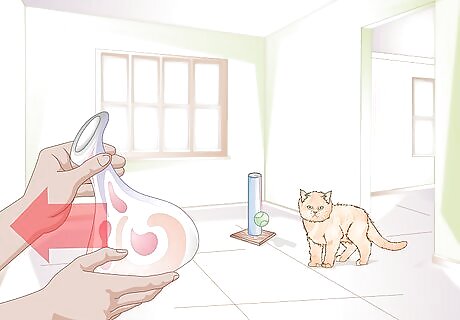
Remove any dangerous or breakable items from the area. If you have breakable items that you value, you may want to have a closed-in curio to display them, so that your cat won’t knock them over. Also remove dangerous houseplants, cotton balls, and anything else the cat might be interested in chewing up and swallowing.
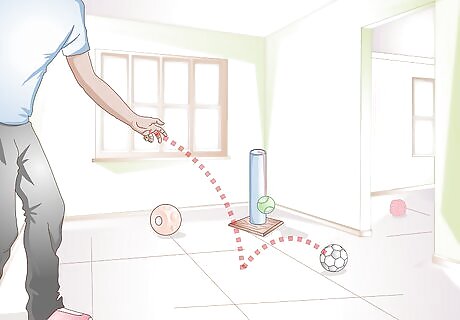
Leave cat toys around the house. Cats like to discover their toys and it can be a great way to keep them entertained. The more toys the better. You can leave them in high places and even some hidden places (under the couch, for instance). That way the cat has "prey" all around the house.
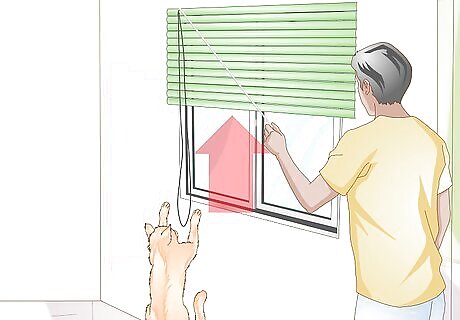
Leave the blinds open so that the cat can look outside while you're gone. Cats like motion, so they will enjoy seeing birds and squirrels go by. It will help keep them entertained in a non-predictable way, and is very cost effective as well. You need not open all the blinds or curtains, just a few that are near the couch or the cat's favorite perch.
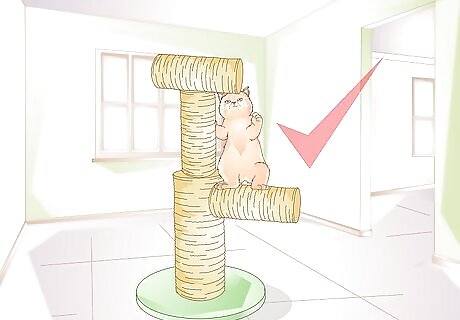
Get a scratching post or three. This is a great way to keep a cat busy. Cats need to scratch, and scratching posts are essential if you don’t want your furniture and carpet completely scratched up. Scratching posts may not completely resolve that problem, but it will mostly likely help. There are all kinds of scratching posts out there in many different designs and to fit many different budgets. Try out different designs to see which the cat likes best. This will help keep your cat away from the furniture.
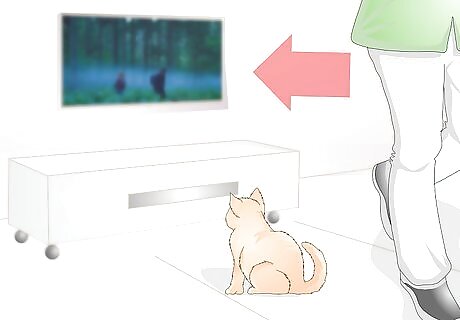
Keep the television on. The volume shouldn't be turned up too high, but at normal speaking level. Human voices will make your cat less lonely, and the TV can be set for colorful children's programs or nature programs featuring birds and fish. This will help keep a cat entertained with the movement on the screen.
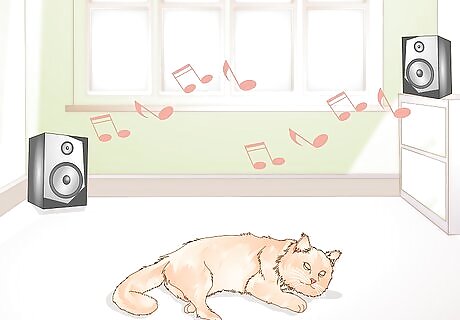
Put on some music or sounds that your cat likes. Classical is often a nice genre, but if you know your cat likes a particular kind of music, play that. Leave it on repeat so that the cat has music all day long. The music should help relax an anxious cat.
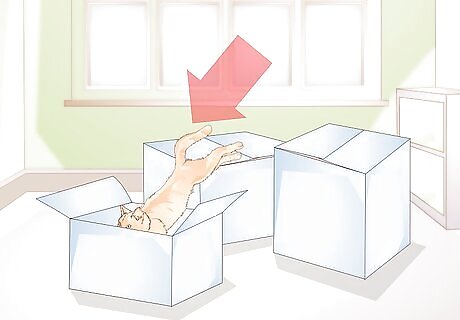
Leave out a couple of small, light boxes for your cat to jump around in. Cats love strange hiding places. Boxes are a cost effective way to keep your cat entertained. They are also easy to modify for cat toy projects.
Installing a Catio for Secure Outdoor Entertainment
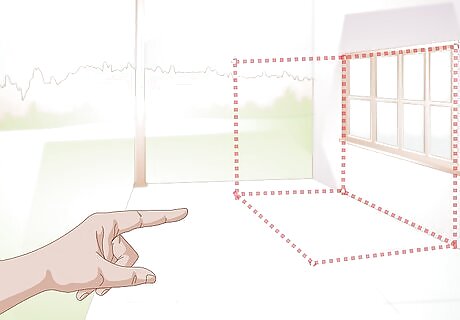
Choose a space for the catio. You’ll want a space where the cat can at least see outside. If you have a sunroom or a closed-in porch, that can function as the perfect catio. The cat will be able to see birds and squirrels, which will keep them entertained for hours. A window can be a great fit for a catio.

Get any necessary permits or permissions. If you rent, you may not be able to add a catio without the permission of your landlord. If it is an easily removable catio, this might not be a problem, but if you are building onto the house, it will likely need permission. Permits may also be required by the city or home owners’ association. Contact your local permit office to get more information.

Order or build a catio. If you don’t have a sunroom or closed-in porch, you may have to build or buy a catio. Many places have design plans you can buy, as well as pre-designed catios that you simple have to install. If you’re making your own, you’ll need a screen that a cat can’t claw through, wood for structural support, and a hard piece of material for the base. You can always make the base cushy, once you have the basic support. Make sure you measure your window before ordering a pre-made catio.
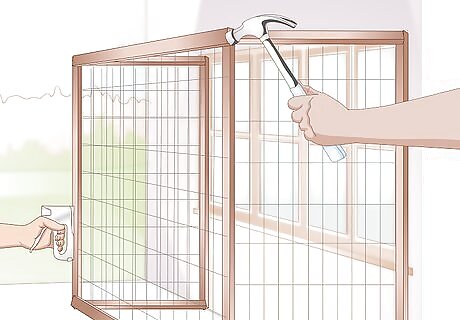
Install the catio. When you have your catio, install it in the window. If you’ve measured correctly, this should be as easy as installing a window air conditioning unit. You’ll want to make sure that there is no space around the catio for the cat to escape. If the catio doesn’t fit perfectly, place some kind of firm barrier that the cat can’t move in the space.
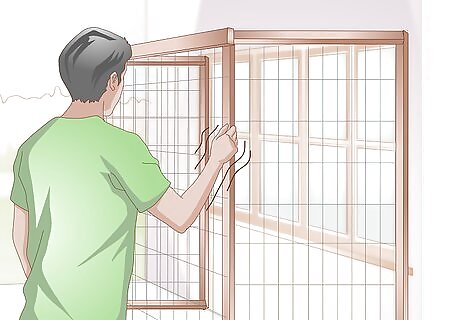
Check to make sure the catio is secure. Make sure there are no cat-sized spaces for the cat to escape. Also make sure the catio has enough structural support. You might want to place something that weighs the same as your cat or cats in the catio to see if it remains stable. Shake the catio to make sure it's firmly in place. The last thing you will want is to come home and find your cat has escaped. Don’t forget to make sure that other animals, especially predators, can’t get into or dislodge the catio.
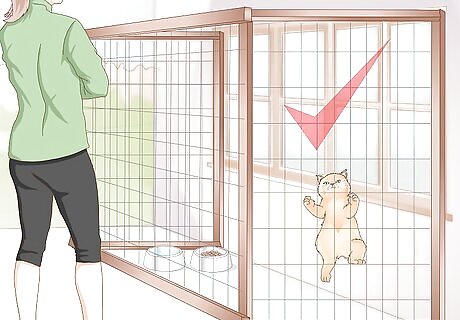
Let your cat go for a test run. This is important for a couple of reasons. Letting the cat go for a test run while you’re home will allow you to see if there are any problems that could arise while you’re gone. It will also let you see if your cat even likes the catio and how your cat interacts with it.















Comments
0 comment